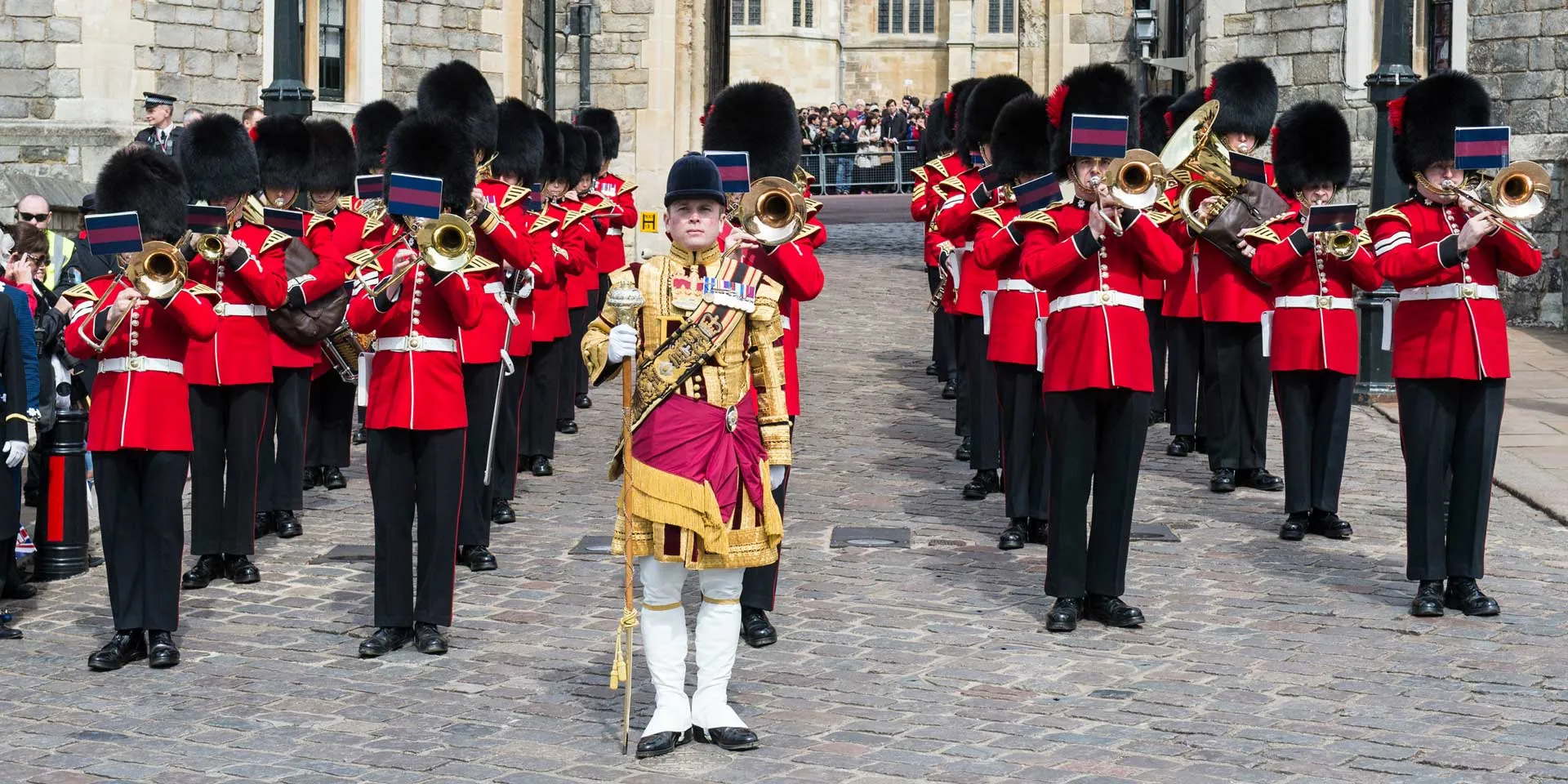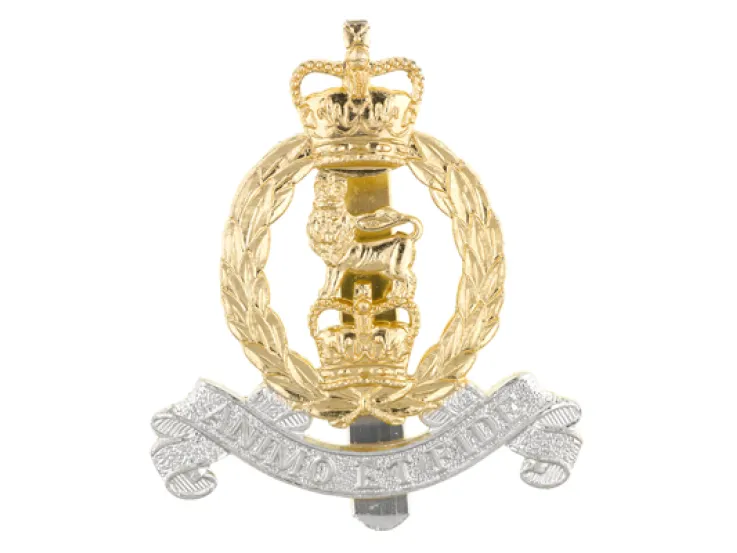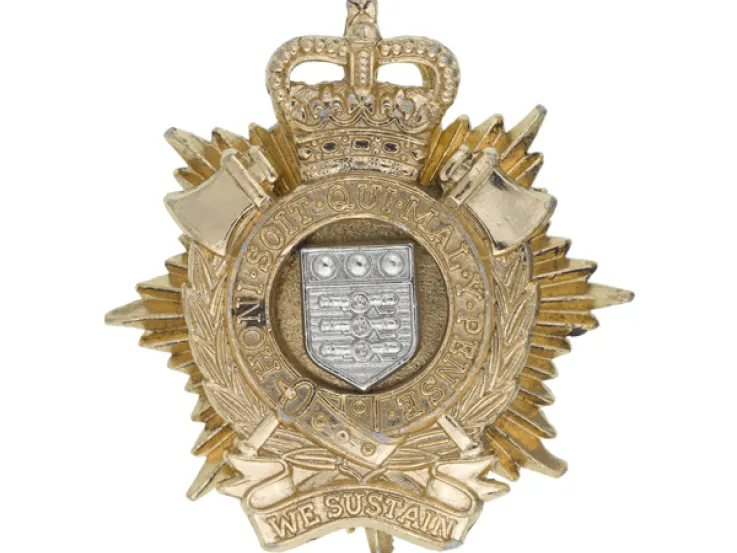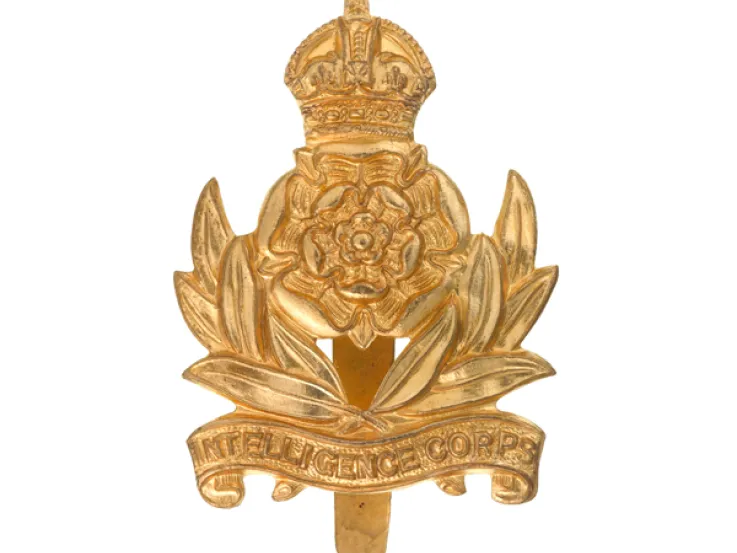Origins
For most of the British Army’s history, each regiment and corps had its own band to meet its musical needs. As a result of restructuring at the end of the Cold War (1947-91), the number of bands was reduced to 30. In 1994, a new unit was set up to oversee their work and take on responsibility for the promotion of military music.
All musicians in the regular Army, as well as all officers who were Directors of Music in the various corps and regiments, transferred to this new Corps of Army Music. Army musicians are fully trained combat soldiers and many have specific battlefield roles alongside their musical duties.
The headquarters for the new unit was at Kneller Hall in Twickenham, London. This had previously housed the Royal Military School of Music, founded in 1857 to provide musical training and to standardise the tuning and arrangements used by regimental bands.

Cap badge, Corps of Army Music, c2019

Instructing a cornet player at Kneller Hall, c1957
Today
The corps continues to supervise the remaining 14 bands and orchestras of the regular British Army, as well as overseeing several Army Reserve bands. These include the Band of the Household Cavalry, the Band of the Royal Regiment of Scotland and the Band of the Royal Yeomanry.
In 2021, the corps was granted a ‘Royal’ prefix in recognition of its services. That same year, it moved its headquarters to Gibraltar Barracks at Minley in Hampshire.
Regimental museums
The National Army Museum works with a network of Regimental and Corps Museums across the UK to help preserve and share the history and traditions of the Army and its soldiers.
The Museum of Army Music is currently closed while it secures a new home.








